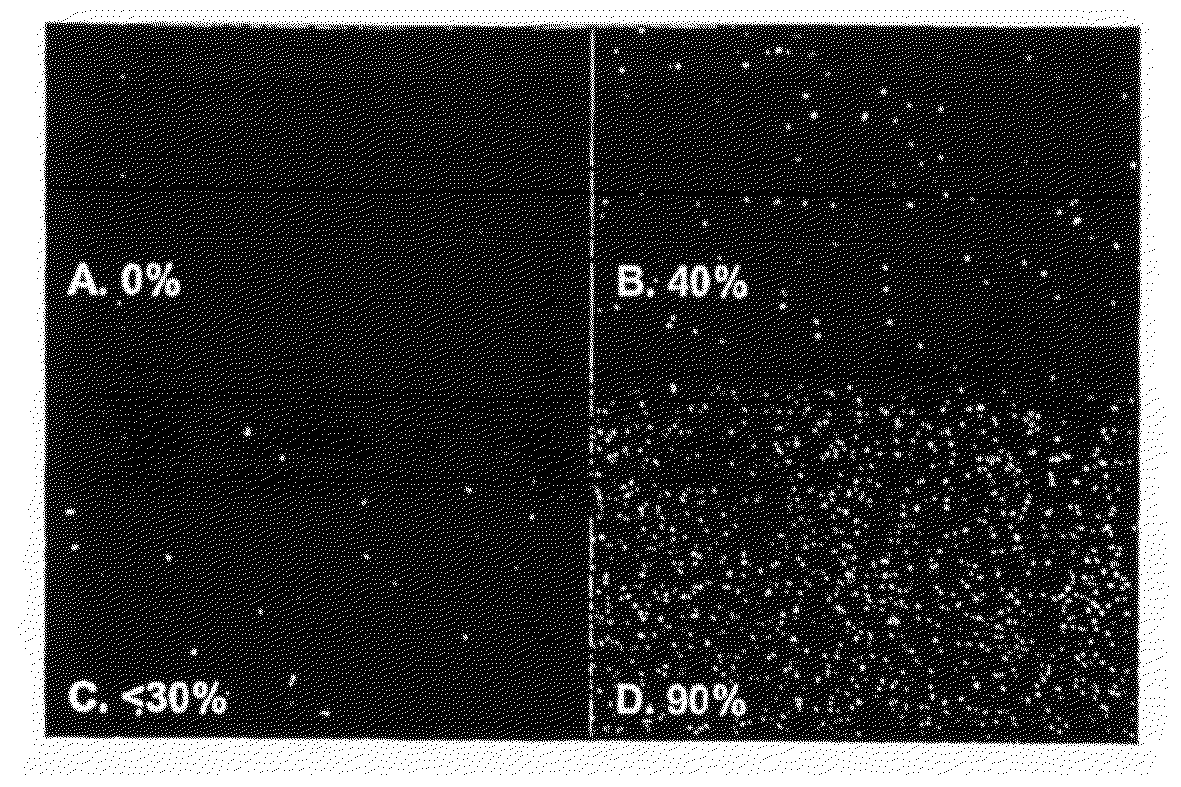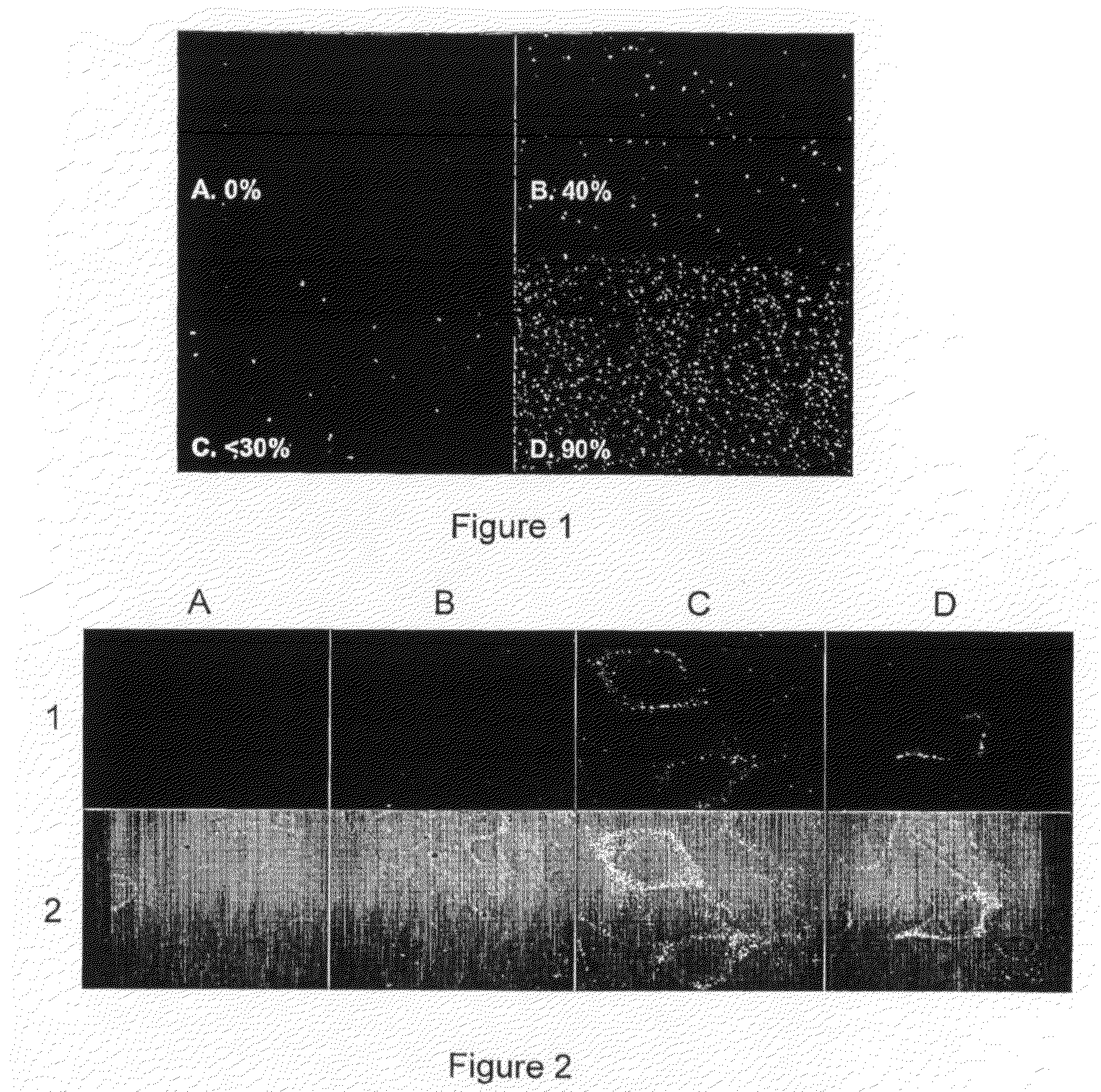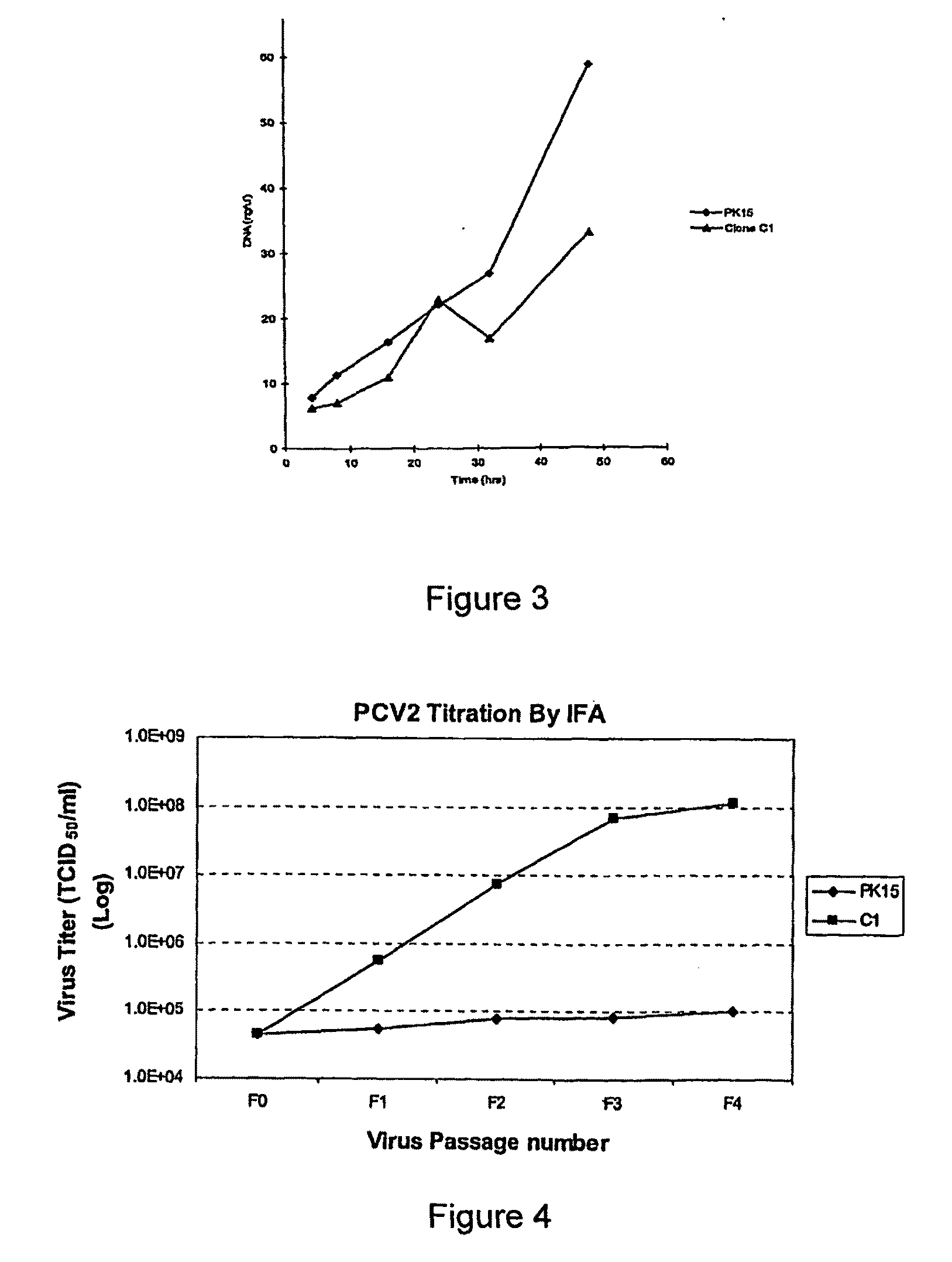Production of Homogeneous Cell Line Highly Permissive To Porcine Circovirus Type 2 (PCV2) Infection
a homogeneous cell line and pcv2 technology, applied in the field of production of porcine circovirus type 2 (pcv2), can solve the problems of slow and progressive, high fatality rate of affected pigs, and a significant threat to the economics of the global swine industry, and achieve the effect of high permissive pcv2 infection
- Summary
- Abstract
- Description
- Claims
- Application Information
AI Technical Summary
Benefits of technology
Problems solved by technology
Method used
Image
Examples
example 1
Production of PK15-C1
[0023]The PK15 parent cell line was maintained in Eagle's minimum essential medium (MEM), supplemented with 5% fetal bovine serum (FBS), 2.2 g / L sodium bicarbonate, 2 mM L-glutamine, 1.0 mM sodium pyruvate and antibiotics. Cloning of PK15 cells was performed by the limiting-dilution method. The cells were trypsinized, diluted at a mean concentration of 1 cell / well in MEM / 20% FBS / 60% conditioned media and dispensed into 96-well tissue culture plates. The wells were immediately screened for single cells and marked, and the plates were incubated at 37° C. in an atmosphere of 5% CO2. Following the identification of cell monolayers from the initial cloning, these subclones were subjected to another round of further cloning.
[0024]The PK15 parent and cloned cell populations were screened by immunofluorescence assay (IFA) for high- and low-permissive cells. The cells were seeded to 70% confluency in 96-well plates and infected with PCV2 with a titer of about 105 TCID50 / ...
example 2
Characterization of PK15-C1
[0025]PK15 parent cells and clone C1 cells were characterized by their mean generation time in hours. Approximately 1×105 cells were seeded into 6-well plates, and cultured in MEM / 10% FBS. The cells were trypsinized, counted, and underwent DNA extraction and quantitation at 0, 4, 8, 16, 24, 32 and 48 hours post-seeding. From the cell count and DNA quantitation data, the mean generation times of PK15 parent and clone C1 cell populations were determined to be 12.1 and 14.6 hours respectively. The results shown in FIG. 3 and Table 1 suggest that PK15 parent cells doubles faster than that of clone C1 cells.
[0026]Following, the titres for released virus in the culture supernatant were compared between virus yields from PK15 parent and clone C1 cells. The cells were seeded to 70% confluency in 150 cm2 tissue culture flasks and infected with PCV2 (104 TCID50 / ml) at 6 hours post-seeding. The infected cultures were treated with D-glucosamine and maintained in cultu...
PUM
| Property | Measurement | Unit |
|---|---|---|
| adsorption | aaaaa | aaaaa |
| heterogeneous | aaaaa | aaaaa |
| Olympus fluorescent microscope | aaaaa | aaaaa |
Abstract
Description
Claims
Application Information
 Login to View More
Login to View More - R&D
- Intellectual Property
- Life Sciences
- Materials
- Tech Scout
- Unparalleled Data Quality
- Higher Quality Content
- 60% Fewer Hallucinations
Browse by: Latest US Patents, China's latest patents, Technical Efficacy Thesaurus, Application Domain, Technology Topic, Popular Technical Reports.
© 2025 PatSnap. All rights reserved.Legal|Privacy policy|Modern Slavery Act Transparency Statement|Sitemap|About US| Contact US: help@patsnap.com



